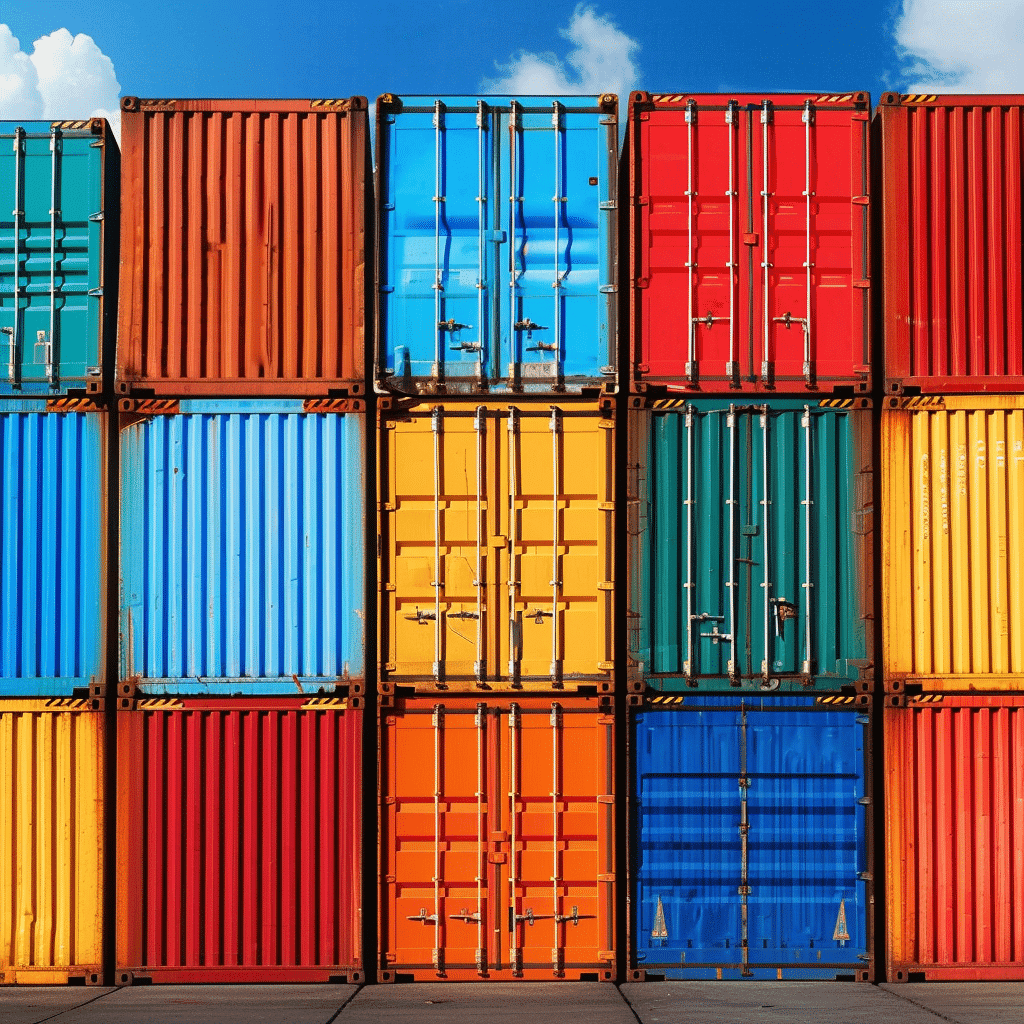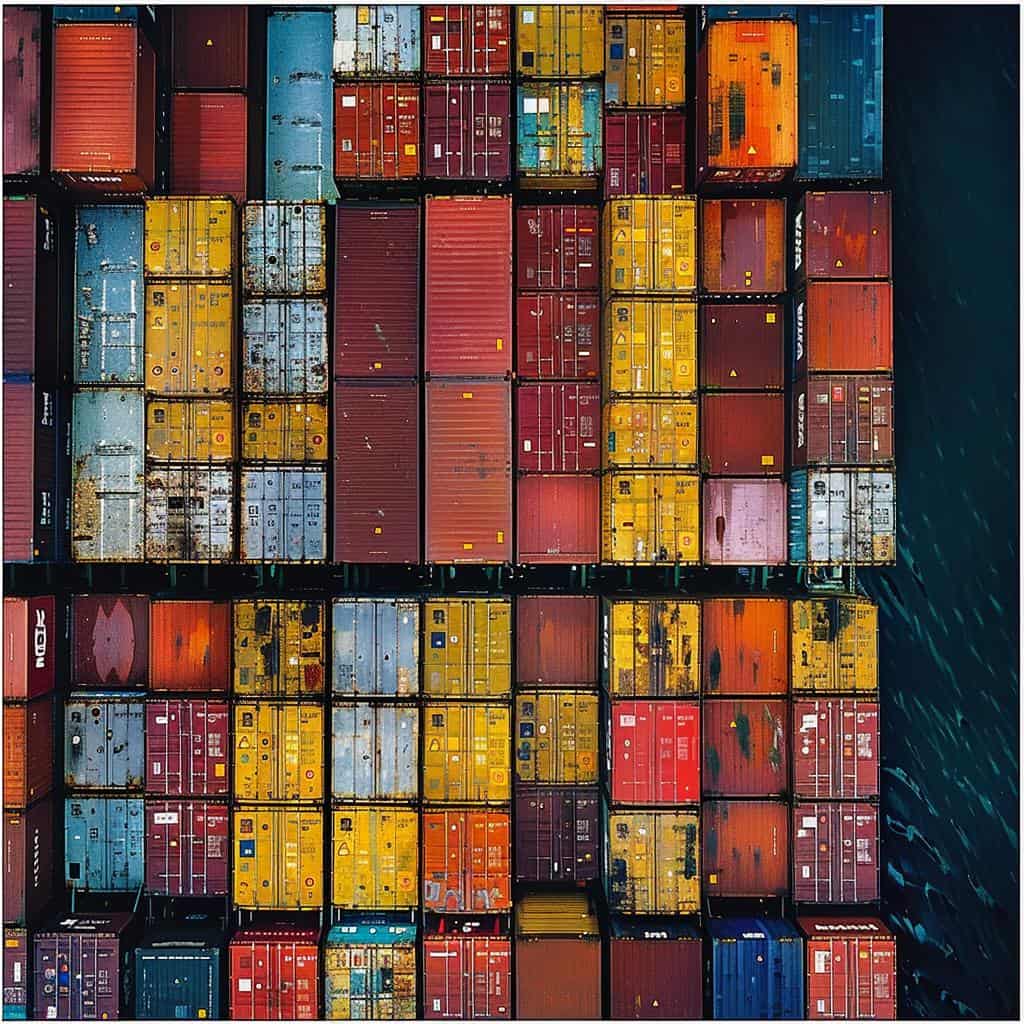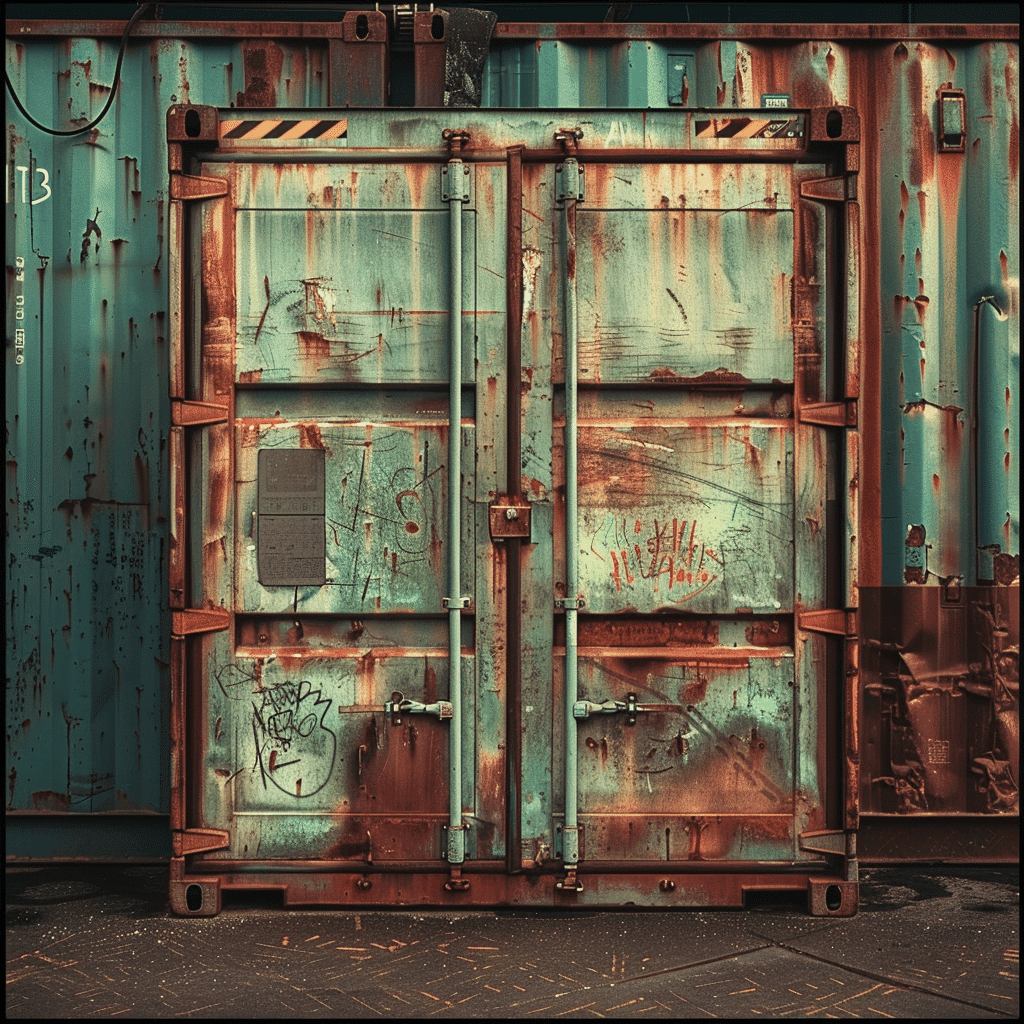In your quest for a durable storage solution, you’ve likely come across shipping containers and wondered about their water resistance capabilities.
‘Are shipping containers waterproof?’ you might ask. Well, it’s not a simple yes or no answer.
While shipping containers are designed to be watertight, meaning they can withstand harsh weather during ocean transport, they aren’t inherently waterproof.
Over time, steel shipping containers can succumb to rust and leaks. However, with the right waterproofing techniques, you can enhance their water resistance.
So, while shipping containers aren’t naturally waterproof, you can transform them into watertight containers with a little effort.
Understanding Water Resistance in Shipping Containers
To fully understand why you can’t take a shipping container’s water resistance for granted, let’s delve into the specifics of their design and function.
Most cargo containers are made from steel, making them naturally water-resistant. However, this doesn’t automatically make all shipping containers waterproof. Over time, exposure to the elements can lead to corrosion, reducing this water resistance. That’s why many steel containers are treated with an anti-corrosion coating.
An additional hydrophobic coating can enhance the waterproofing, making a watertight shipping container. The door area is also critical. Rubber door seals are used to prevent water ingress, but they can degrade over time.
Therefore, ensuring your shipping container’s water resistance involves proper maintenance and regular checks.
Definition of Terms: Waterproof vs. Watertight vs. Water-Resistant
Before we dive deeper, it’s crucial you understand the differences between the terms waterproof, watertight, and water-resistant, as each has a unique meaning when it comes to shipping containers.
A waterproof shipping container can completely block water, making it ideal for sea travel and extreme weather conditions. It ensures your cargo stays dry no matter what.
In contrast, a watertight shipping container isn’t completely impervious to water. It can keep out water under certain conditions, but prolonged exposure might let moisture seep in.
Lastly, water-resistant means the container can resist water to some degree but isn’t designed to be submerged. It’s a great choice if you’re looking to transport goods where there’s minimal risk of heavy rainfall or flooding.

Material Composition of Shipping Containers and Its Impact on Water Resistance
While you’re considering the differences between waterproof, watertight, and water-resistant shipping containers, it’s also important to factor in the material composition of these containers, as it significantly impacts their resistance to water.
Most shipping containers are steel structures, making them inherently watertight. However, metal containers can absorb moisture and rust over time, causing water damage. To prevent this, they’re often coated with mineral oil, which repels water and helps maintain the container’s integrity. You could also paint your shipping container with a direct-to-metal paint with water-resistant properties.
Additionally, durable rubber seals are used around doors to keep water out. So, while the material composition of the container is crucial in determining its water resistance, it’s also the treatment and maintenance of these materials that ensure your goods remain safe and dry.
Factors Affecting Water Resistance of Shipping Containers
Over time, you’ll find that several factors can affect the water resistance of your shipping containers. High temperatures and strong winds can seriously damage the watertight shipping seals, allowing moisture to seep in. This moisture can lead to condensation, which can be a major problem for steel shipping containers, as it encourages corrosion.
Harsh weather, too, can impact the water resistance of your containers. Heavy rain or snow can put a strain on the container’s structure, possibly leading to leaks. To avoid this, it’s important to regularly inspect your containers for any signs of damage or wear and tear.
Importance of Anti-Corrosion Coatings
To protect your shipping containers from rust and corrosion, it’s crucial to apply anti-corrosion coatings. These coatings form a barrier on the surface of the metal container, sealing it and making it waterproof. This is especially important for shipping containers as they’re typically made of steel, a material prone to rust when exposed to moisture.
Without a solid coating, your shipping containers could easily degrade, resulting in costly damage. The waterproof layer provided by anti-corrosion coatings ensures that your steel assets withstand harsh weather conditions and sea water, prolonging their lifespan.
The Significance of Rubber Door Seals in Maintaining Water Resistance
Just as vital as anti-corrosion coatings, you’ll find that rubber door seals play a significant role in maintaining the water resistance of your shipping containers. These seals ensure your storage container is tightly sealed, offering a waterproof solution to protect your goods. A good seal defends against the elements, keeping your container wind and watertight.
However, remember that seals can wear over time. Regular checks and maintenance are crucial. If you spot any damage, replace the seals promptly to maintain your container’s water resistance.
Ensuring a well-sealed container isn’t just about keeping water out; it’s about safeguarding your investment. So, don’t underestimate the importance of those rubber door seals in your shipping containers. They’re key to keeping everything dry and secure.
Challenges in Ensuring Water Resistance
Despite your best efforts, you’ll encounter several challenges in ensuring complete water resistance for your shipping containers.
You may believe that making shipping containers airtight is the solution, but it’s not that simple. The watertight means you employ, such as seals, can get damaged, hindering your attempts to prevent water from seeping in.
Weather is another adversary in this battle. Extreme weather conditions can cause wear and tear on the construction of the containers, leading to potential leaks and the occurrence of mold.
Furthermore, even if your containers can withstand rain, they mightn’t be prepared for flooding. The water pressure during a flood can cause seals to give way, leading to water damage inside the container.
Overcoming these challenges is crucial to truly waterproof your shipping containers.
Enhancing Water Resistance of Shipping Containers
You can enhance the water resistance of your shipping containers by implementing a few effective measures.
First, consider purchasing a new shipping container. The durability and resistant properties of new containers can meet your storage needs more efficiently.
If a new cargo box isn’t within your budget, don’t worry. Applying a waterproof coating to your existing storage containers can also increase their water resistance.
Additionally, using calcium chloride desiccants can absorb moisture within the container, further enhancing water resistance of shipping containers.
Steps To Waterproof a Shipping Container
To waterproof your shipping container, it’s crucial to start with a thorough inspection for any existing damages or leaks. Look for signs of rust or corrosion on the metal surface, especially on the roof and doors. These areas are often most exposed to rain and can be the first to show signs of water damage.
Once you’ve identified any problem areas, the next step to waterproof your shipping container is to seal these spots with a high-quality, waterproof sealant. Don’t forget to check the doors and ensure they close tightly.

Special Considerations for Different Types of Cargo
When packing your shipping container, consider that different types of cargo require various levels of protection against moisture damage. High quality containers provide excellent storage, but special considerations for different types of cargo still apply.
For instance, electronics need more protection than furniture. Remember, temperature changes during the ship’s journey across the ocean can cause condensation inside the container, potentially damaging the goods inside. It’s crucial to choose containers designed to resist such changes.
If you’re shipping perishable items, you might need containers with temperature control. Regardless of what you’re shipping, ensure your container is waterproofed properly. Doing so can save you a lot of stress and potential damage to your cargo.
Choosing the Right Container for Your Needs
Considering your specific needs is essential in selecting the right shipping container that’s both durable and waterproof.
When purchasing, you must ensure the container is coated, which protects it from salt water when transported on large vessels. A quick inspection for small holes is crucial too, as these can compromise waterproofing. Always opt for high-quality materials that won’t easily corrode.
Once you secure the container, store it in a dry place to prevent unnecessary exposure to moisture.
In essence, picking the right container isn’t just about buying any box; it’s about finding a solution that meets your particular requirements. By considering these factors, you’ll be well on your way to a solid, waterproof investment.
Frequently Asked Questions
Do Shipping Containers Leak Water?
Shipping containers are generally designed to be watertight, especially when they are new. They are manufactured with durable rubber seals around their doors to prevent water ingress. However, it’s important to distinguish between being waterproof and watertight. While all shipping containers offer a degree of water resistance due to their corrugated steel structure, they may not necessarily be completely waterproof.
This means that under certain conditions, especially if the container is old or has damaged seals, it might allow moisture to enter. When shipping containers are repurposed for personal or company storage use, they are typically inspected and repaired to ensure that their watertight seal remains intact. Regular maintenance and inspections are crucial for keeping shipping containers water-resistant over time.
Can Water Get Into Shipping Containers?
Water can indeed enter shipping containers, particularly through vents and seals. This is a significant concern, especially for containers that are exposed to harsh marine environments or those that are not properly maintained.
While new shipping containers are typically manufactured with durable rubber seals around their doors to prevent water ingress, over time, these seals can deteriorate. Additionally, the structure of the container itself, including factors like its age and condition, plays a crucial role in its ability to remain watertight.
Refrigerated containers, known as reefer containers, are among the most airtight types of shipping containers and are more resistant to water ingress. However, no container is completely sealed, and under certain conditions, moisture can penetrate, leading to potential damage to the contents inside. Regular maintenance and inspections are essential to ensure that shipping containers remain as water-resistant as possible.
Can a Shipping Container Withstand a Flood?
Shipping containers are designed to be highly resistant to severe weather conditions, including floods. They are constructed primarily from steel, which provides a significant level of water resistance. While they are not entirely waterproof, their robust construction and water-resistant properties enable them to withstand floodwaters up to a certain level.
However, it’s important to note that their resistance to flooding depends on several factors, such as the integrity of the container, particularly at weak points like doors and window frames.
In most cases, new shipping containers, equipped with durable rubber seals around their doors, can effectively resist water ingress during floods. Their ability to withstand powerful winds and storms further enhances their suitability for use in flood-prone areas. Nonetheless, the extent to which a shipping container can resist floodwaters without allowing damage to its contents depends on the severity of the flood and the condition of the container.
Regular maintenance and inspections are crucial to ensure that shipping containers maintain their structural integrity and water-resistant capabilities.
Are Shipping Containers Moisture Proof?
Shipping containers are designed to be water-resistant but not completely moisture-proof. While their steel construction enables them to withstand harsh weather conditions and resist water ingress to a significant extent, they are still susceptible to moisture build-up, especially when in storage or transit.
This moisture can lead to condensation inside the container, a phenomenon known as “container rain,” which can potentially damage the cargo. To mitigate this issue, various methods are employed, such as using desiccants to absorb ambient moisture, choosing the right pallets, and ensuring proper insulation to prevent the cold steel from being exposed to warm air, which reduces condensation.
Additionally, maintaining a low humidity level inside the container, possibly through the use of dehumidifiers, is crucial for keeping moisture at bay. However, it’s important to note that these measures are more about managing moisture in your storage container rather than completely eliminating it, as no shipping container is entirely moisture-proof. Regular maintenance and appropriate modifications are necessary to minimize moisture-related issues in shipping containers.
Conclusion
So, you’ve seen that shipping containers can indeed be waterproof if you make the right choices and take the necessary precautions. This means you can use these sturdy boxes to protect your valuables from the elements, heavy impacts, and changes in temperature.
You might opt for a reduced price unit that needs additional maintenance or go for a pricier, but more reliable one that’s already weatherproofed. Remember, it’s not just about keeping water out. The container needs to be elevated off the ground to prevent rust and corrosion.


